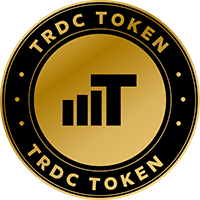


HappyFansの価格HAPPY
HappyFansに投票しましょう!
HappyFans (HAPPY)について
HappyFans Tokenとは?その歴史的な重要性と主要機能
暗号通貨、または暗号資産として知られるデジタル通貨の世界は、ビットコイン(BTC)によって2008年に初めて人々の意識に入り、その後、急速に成長しました。一部の者たちは暗号通貨を単なる 仮想通貨と誤認するかもしれませんが、実際にはそれはもっと革新的な仕組みを元に他の何物にも難しいものです。これらのデジタル通貨の一つがHappyFans Tokenです。この記事では、HappyFans Tokenの歴史的重要性と主要機能をお伝えします。
HappyFans Tokenの歴史とその重要性
HappyFans Tokenは、 ブロックチェーン技術をベースに作られた新進の暗号通貨です。暗号資産の世界で非常に新しい存在として現れたものの、その着実な成長と将来性は、既に大きな注目を集めています。様々な暗号通貨が存在する中で、HappyFans Tokenの歴史的重要性はその特異な扱いにあります。HappyFans Tokenはユーザーエクスペリエンスとエンゲージメントを向上させる目指して設計されているのが特徴で、特定のコミュニティやファンと深く繋がるための資産として働きます。
HappyFans Tokenの主要機能
HappyFans Tokenの一つの際立った特徴は、ファンとの直接的な接続を可能にすることです。これにより、ファンは自分たちが支援するコンテンツやユーザーとより深くつながることができます。また、HappyFans Tokenはファンに対する報酬としても使用でき、これによりファンエンゲージメントとロイヤルティが助長されます。
ブロックチェーン技術は、トランザクションの透明性を確保し、詐欺や二重支払いの防止に役立ちます。これにより、HappyFans Tokenは安全で確実なデジタル取引の仕組みを提供します。
結論
暗号通貨の世界は、既存の金融体系への新しい視点を提供し、より透明で効率的な取引を可能にしています。HappyFans Tokenは、その特定のニーキャラクターと、ファンやコミュニティとの深い関わりを通じて、新たなエンゲージメントと経験を生み出す可能性を秘めた唯一の暗号通貨です。
HappyFansのAI分析レポート
本日のHappyFans価格(JPY)
HappyFansの価格履歴(JPY)
 最低価格
最低価格 最高価格
最高価格 
HappyFansの最高価格はいくらですか?
HappyFansの最安価格はいくらですか?
HappyFansの価格予測
HAPPYの買い時はいつですか? 今は買うべきですか?それとも売るべきですか?
2026年のHAPPYの価格はどうなる?
2031年のHAPPYの価格はどうなる?
よくあるご質問
HappyFansの現在の価格はいくらですか?
HappyFansの24時間取引量は?
HappyFansの過去最高値はいくらですか?
BitgetでHappyFansを購入できますか?
HappyFansに投資して安定した収入を得ることはできますか?
HappyFansを最も安く購入できるのはどこですか?
HappyFansの集中度別保有量
HappyFansの保有時間別アドレス

HappyFansのグローバル価格
- 1
- 2
- 3
- 4
- 5
もっと購入する
暗号資産はどこで購入できますか?
動画セクション - 素早く認証を終えて、素早く取引へ

HappyFansの評価
Bitgetインサイト




関連資産
HappyFansの追加情報
























.png)








